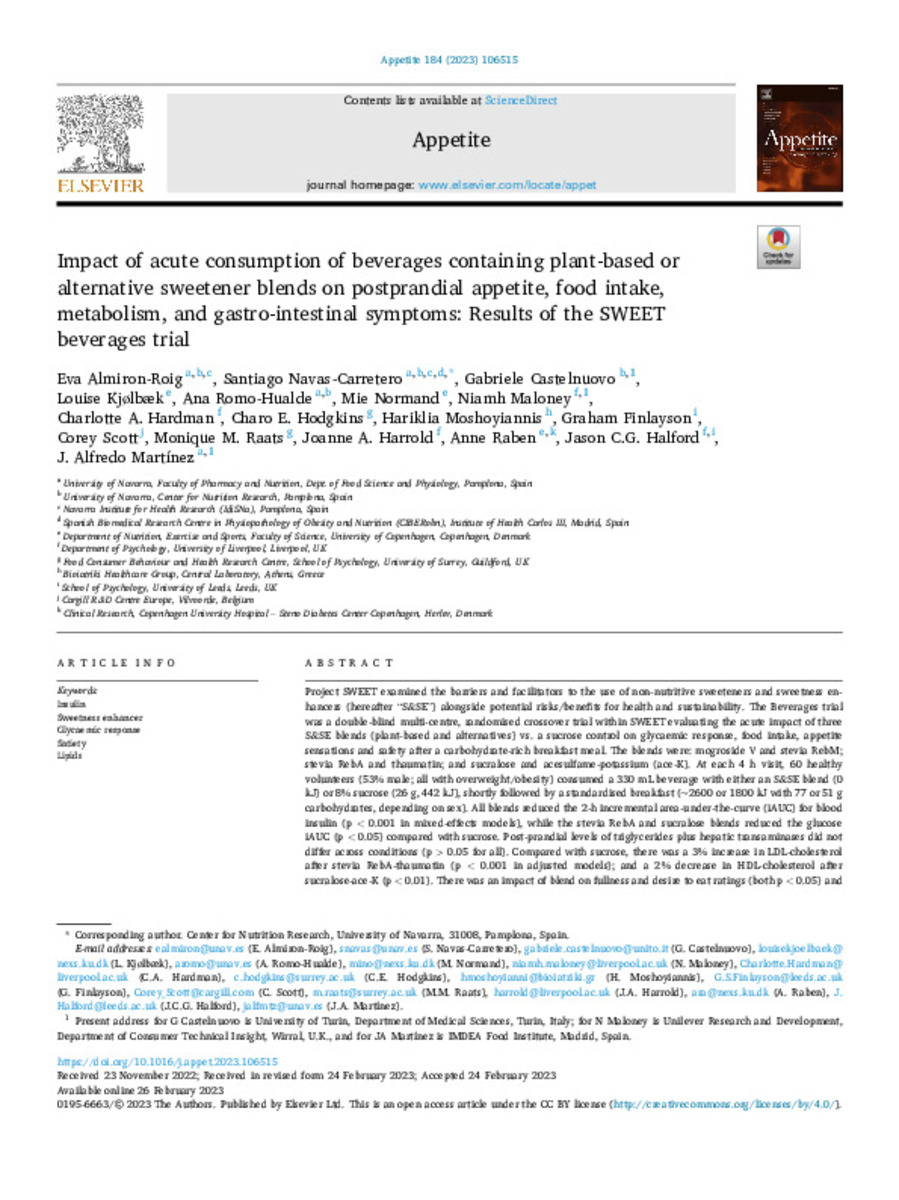Impact of acute consumption of beverages containing plant-based or alternative sweetener blends on postprandial appetite, food intake, metabolism, and gastro-intestinal symptoms: Results of the SWEET beverages trial
Keywords:
Glycaemic response
Insulin
Lipids
Satiety
Sweetness enhancer
Note:
This is an open access article under the CC BY license
Citation:
Almiron-Roig, E. (Eva); Navas-Carretero, S. (Santiago); Castelnuovo, G. (Gabriele); et al. "Impact of acute consumption of beverages containing plant-based or alternative sweetener blends on postprandial appetite, food intake, metabolism, and gastro-intestinal symptoms: Results of the SWEET beverages trial". Appetite. 184, 2023, 106515
Statistics and impact
0 citas en

0 citas en

Items in Dadun are protected by copyright, with all rights reserved, unless otherwise indicated.








